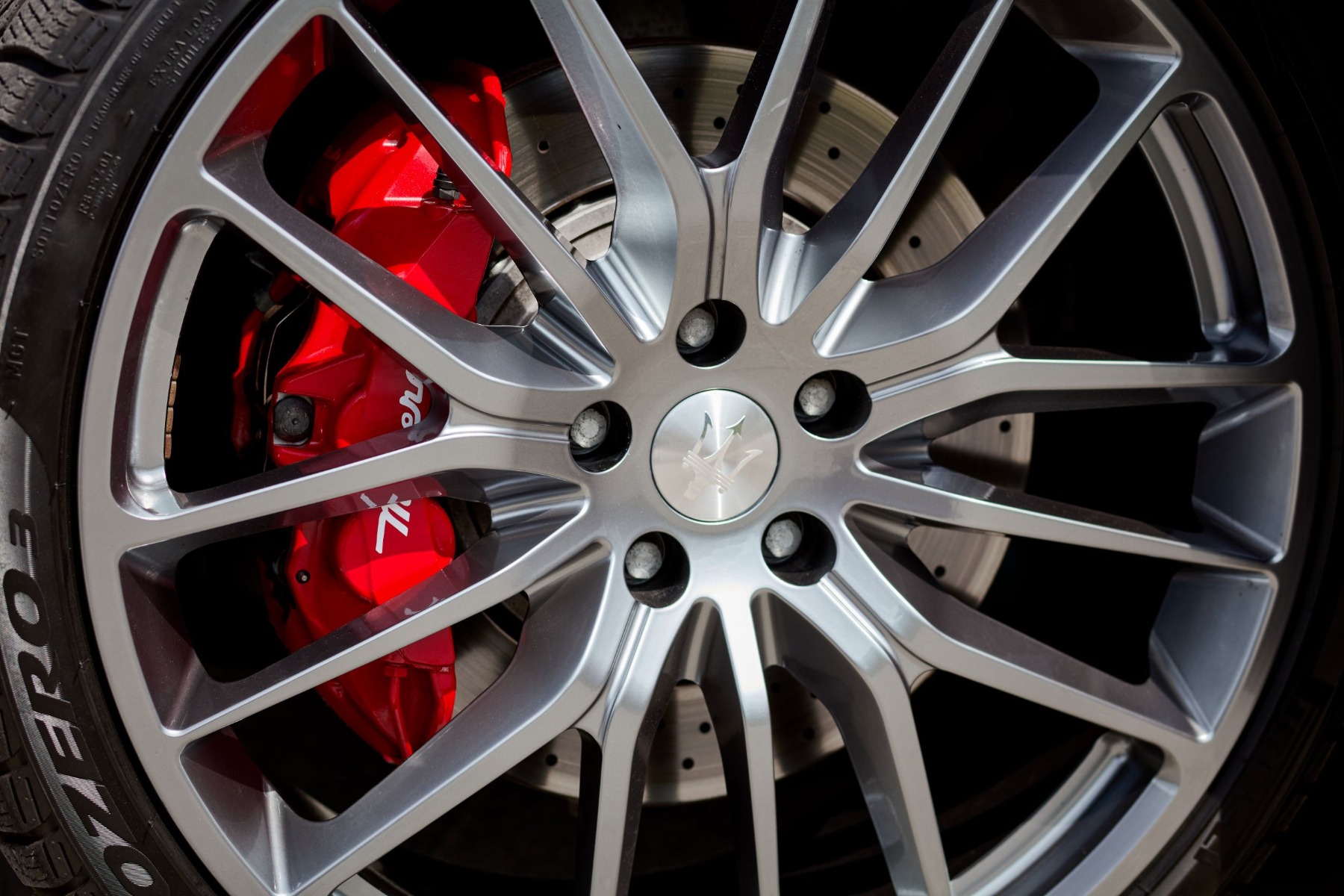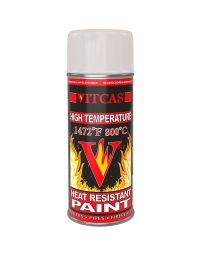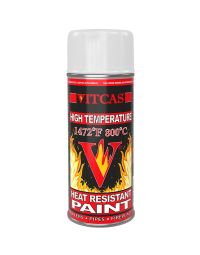Every place on this planet is trying to come up with better ways to protect themselves in times of natural disasters, calamities, and fires.
Heat Resistant Paints are among the best and most commonly used methods of slowing down fire and fighting against it. These protect the surface from flames, and also from the corrosive effects of these.
How Does Fire Work?
Three components must be available in order for a natural fire to exist. Oxygen, heat, and any fuel are the three components, and these are also known as a deadly "fire triangle", which work together as a fierce team to inflict the greatest possible damage caused by flames. By merely eliminating one of those components, you can easily reduce the damage done. You can take out oxygen, heat, or the fuel from the equation, and the remaining elements will allow you to easily take down a fire.
If any fire gets strong enough to engulf the surrounding region, it can not only take down an entire building, but the wind can also transport the flames from one building to the next. This is exactly what happens during times of mass fire. It is important to be ready for these fires, and also to fireproof the underlying elements to fight against the raging fire.
How Do High Heat Paints Fight Against the Fire?
Heat or Fire-resistant paints are among the most common, inexpensive, and safest methods to fight against the outbreak of fire in any commercial or residential space.
Fire retardant paints and coating layers are specifically designed for the purpose of withstanding high temperatures and neutralizing the elements involved in the fire triangle. Moreover, these paints provide heat resistance up to 700 °C or above.
Fire retardant paints are usually made up of epoxy phenolic, silicone, epoxy novolac, silicone, or a more specialized multi-polymeric matrix. The composition of these paints relies on the level of fire safety, and fire resistance required and the underlying material.
The foamy layer or the coat from any fire-resistant paint serves the purpose of covering the fuel element of the previously mentioned fire triangle. The heat generated by the flames allows the heat resistant paint coating to produce a fire dampening agent as it comes in touch with it.
This heat dampening agent then effectively stops the fire from completely forming into a giant one. When the fuel is taken out or neutralized, the fire dies in its infancy.
These paints can be used on surfaces like ceilings, walls, and other components of any space. Moreover, you need to understand that these paints only help you by slowing down the time taken by fire to completely engulf everything.
Eventually, the paints will run out of foam to fight against the fire, and you will have to use a foreign substance to neutralize the flames. These paints provide you with ample time to get everyone and everything out safely and come back with the proper and appropriate equipment to take care of the fire.
High heat paints and fire retardant items may act to secure their surface in several different ways. The material used would also be determined by the amount of fire safety needed, and the underlying surface to be covered and protected by the coating.
Many of these heat resistant paints release gasses that are intended to minimize the spread of fires over the nearby regions and surfaces, while other fire retardant paints and items create a defensive char coating that can help cover the underlying material for a limited period of time. The choice of the product and the paint depends upon the level of the safety required, and the material used in the surface.
However, you need to know that there are various classes of these paints, and the heat resistant paint you choose should pass the latest rules and regulations of the industry. It should meet the criteria for legitimacy and performance against the fire. Additionally, there are different types of heat resistant paints used for commercial and residential spaces. You need to make sure that you are buying the right product for your building.
The Most Popular Applications :
- Protecting high-temperature boilers, such as refineries, etc.
- They are protecting steam pipes in high-temperature environments, such as ships, refineries, etc.
- Protection of Chimneys in commercial sectors and factories to eliminate overheating and corrosion
- Protection of components in refineries and factories with high-temperature requirements
- Protection of walls, ceilings and other elements of an environment against fire
- Protection of equipment in power plants and chemical plants (nuclear plants)
- Fireproofing of restaurants, hospitals, colleges, and residential places
- Protection of automotive components, such as the engine, fan, brake calipers and exhaust compartments
- Building construction
- HVAC systems

Types of heat resistant paints
As we previously mentioned that there are various classes and kinds of heat resistant paints. We will be taking a look at the top 4 versions of them, their composition, and their overall usage.
Multi Polymeric Paint
These epoxy or silicone-based high heat paints come in two different forms: water-based and solvent-based. These types of fire retardant products are basically used for the coating purposes during new construction, remodeling of an existing living or commercial space, or any general construction project.
These paints are quite high in terms of silicon, which offers uniquely strong resistance against high temperatures. Moreover, these paints are also suitable for the coating of engine room boilers, high-temperature machinery/ equipment, stoves, flues and chimneys in domestic fireplaces. The Vitcas Range of Heat Resistant Spray Paints falls into this category.
Powdered Form of Paint
The high-temperature powdered versions of paints are typically based on epoxy and silicone. According to modern researches, the powders based on silicone work better and more efficiently at higher temperatures. Moreover, the powder-based form of high resistant paints is also free from any form of VOC.
These paints also give you the opportunity of employing a number of colour schemes and enticing finishes onto the walls. These paints protect the elements from fire while looking good and blending in with the overall theme of the place.
Thermal Spray
Thermal sprays or metal additive coatings are generally used for the dual purpose of heat resistant and corrosion protection. These paints form a protective coating around the surface, which not only hinders the fire triangle and fights against the heat, but it also fights against the corrosive impact of high temperatures and keeps the elements from fading away with time.
In high-temperature installations and manufacturing facilities, thermal sprayed aluminum is used mainly for CUI protection. Metal additive coatings are more commonly used as temperature stabilizers and heat resistant methods over 400 C.
Ceramic Paint Options
Ceramic coating is well recognized for its heat resistant properties and is also widely used in places with high-temperature machinery and equipment. In fact, a lot of high-temperature machinery parts are composed of ceramic blends and mixtures with other heat resistant materials.
Ceramics are among the top heat resistant options available due to their heat absorbing qualities. They often have a defense against corrosion and resistance against chemicals. These paints can protect not only the insulation but also the metals used in the machinery.
How to choose the best product for your purposes?
You cannot just go over to the market and buy the first heat resistant paint that you see. Like we mentioned previously, these paints are classified into different groups, categories, and classes according to their properties. It makes sense that you know what you want, and when you purchase the product. Let's take a look at some of the most important factors when buying a heat resistant paint for fire safety.
The Offered Temperature Range
This is the first and the most important element to look for when buying a heat resistant paint for commercial or residential purposes. You cannot expect these paints to perform at all conditions and in all circumstances. Understanding the normal working temperature, and any fluctuations can help you decide which coatings to add to your environment.
The paints will not work as desired if you fail to take into account their mentioned and pre-decided temperature range. Each product has a pre-determined temperature range, which depends upon the materials used in its composition. You should take a look at the highest range offered by the paint and then choose to depend upon your specific requirements.
Double Check Your Requirements
Why are you purchasing such paints? Is it for fire safety alone, or also for corrosion protection? Are you buying these paints for CUI prevention or just to fight against the rapid temperature changes?
You need to ensure that the selected paint or coating is specifically formulated for your requirements and problems. Check with the manufacturer, read online reviews, and read the instructional label on the paint to make sure that it offers what you want.
The Offered Application Characteristics
This is one of the major considerations when you are buying a heat resistant paint or coating for your place. The modern market offers a wide range of "thin-film" paints and coatings for high-temperature protection and usage. These thin-film coatings can easily stay flexible, intact, and retain their core properties at even high temperatures.
However, since these thin film coatings are quite hard to create even with today's machinery, most of the people prefer relatively thicker film coatings and paints for their usage. These thick film coatings offer excellent firmness, support, and protection to let higher film build in increased temperatures. These coatings can also stay intact for a longer period of time.
The Coating Environment
Another major factor is the underlying surface. The coating system can be split down into three categories: indoor, medium outdoor, and strong outdoor operation.
When it comes off the indoor coating methods, choosing the lighter grade coating and heat resistant paints would meet most indoor needs, such as stove coating, fireplace coating, or chimney coating around the fireplace. For indoor environments, heat cures are also not a problem because there is no water access.
The medium outdoor applications can range from grill coatings, fire pit coatings, and chimney coatings. These coatings require heavier grade paints to withstand UV rays, as well as rainwater. When dealing with rainwater, it is really necessary to select paint with the optimum temperature range. If the heat resistant paint or coating requires a heat cure before the final application, you need to make sure that it achieves that temperature before it has to fight against the rainwater.
The industrial equipment coating and applications fall under the umbrella of strong and heavy outdoor operations. Many high-temperature automotive coatings such as exhaust coatings, fuel compartment coatings, or engine coatings need road salt industrial-grade output. Very complex operation demands can often be seen in broad chemical manufacturing and filtering plants. Industrial high-temperature coatings are used in these systems on shelves, kilns, and under insulation. Hire a professional to help you choose the perfect heat resistant paint for your industrial applications.
How Can You Safely Apply Heat Resistant Paint?
We would recommend hiring a professional paint company to successfully do this job. However, if you possess more of a DIY spirit, then you need to familiarize yourself with the safest method for applying paints.
For any residential wooden or metallic element or component, you can just use a low-grade heat resistant paint. This will not give off any additional fumes than a normal paint would, so you can easily apply this.
You should carefully read the instruction before using these paints, powders, or spray cans. Cover your eyes, nose, and mouth with the appropriate gear. Point the spray can away from your face and closer to the surface. Make sure to move horizontally and vertically in an even manner so that every inch of the surface is covered in the protective coating.
Once you are done with the paint and spray, dispose of everything according to the manufacturer's instructions. Thoroughly cleanse and wash your fingers and face with soap. Make sure to cure the paints if they require it, otherwise, let them dry for a while.
What Is the Bottom Line Here?
Research before you purchase these paints and hire a professional to assist you if you have any queries. No matter if you want to buy heat-resistant paint for the fireplace or want to paint pipelines, the final choice depends on the material of the surface and the requirements.











